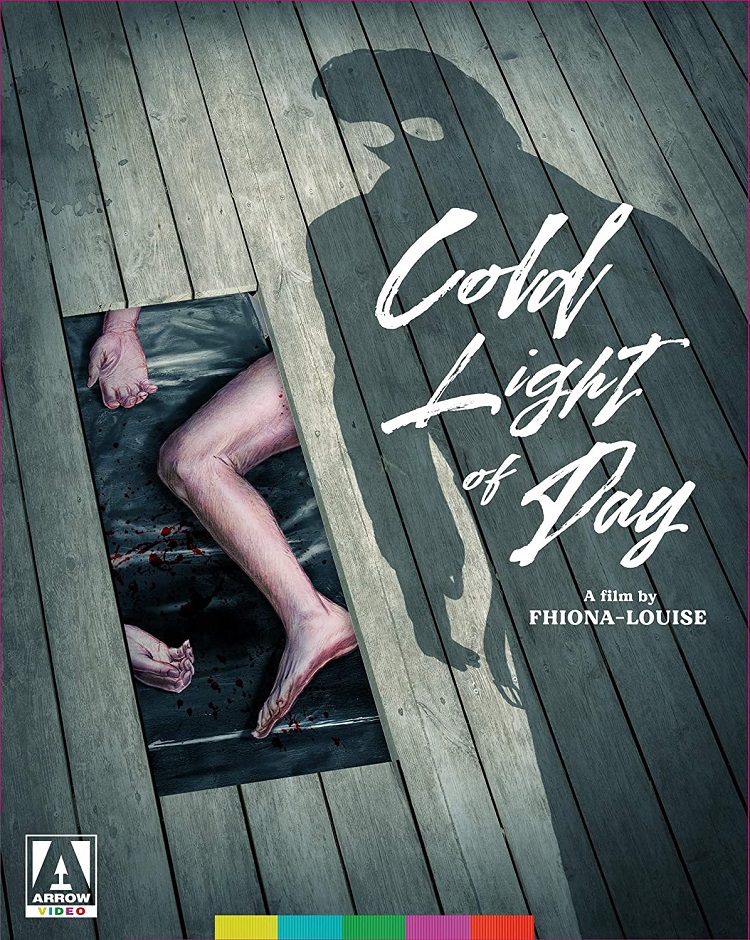
Obscure, cheap, short, and brutal, Cold Light of Day is a surprising discovery of British cinema. Shot on 16mm, the occasionally extremely grainy footage matches the grubbiness of the sets, the characters, and the entire sordid story.
Inspired by real life British serial killer Dennis Nilsen, who may have murdered as many as 17 young men, chopping up their bodies and keeping various pieces of them on his property, Cold Light of Day opens with the murderer, here called Jorden March, being caught by the police. There’s no struggle or fight – they knock on his door, he comes with. Jorden is a small, unremarkable man of no stature, soft spoken and glum. He doesn’t like the woman who lives downstairs (calls her a busybody) but takes care of her cat when she has to go away. He helps out his old neighbor who’s dwindling into senility, bringing him meals from time to time.
And he picks up, when he can, young men from the local pub. What he can expect they want, them being young and handsome and he being so undistinguished, it’s hard to guess, but he gets incensed when, again and again, he finds his kindly gestures (offering them money and a place to stay) are taken advantage of.
So he strangles them to death, with cloth or even his tie. Why does he do it? And, having done it once, falling into a paroxysm of fear and regret afterwards, why does he do it again? And again?
The film does not know. Jorden does not know. He even says, in his interrogation, “The more I talk about it, the less I understand.” There are flashbacks to his grandfather’s death, which apparently happened right in front of him. There’s a trip to a female prostitute that ended in frustration… and that’s it.
Cold Light of Day is not attempting to explain why a multiple murderer of young men did what he did, so much as it displays, dispassionately and sometimes luridly, the awful complication of the act and the aftermath. It’s told in a mostly linear fashion, interspersed with the scenes of the police interrogation. The detective goes through specific, disgusting details of March’s crimes, and March is confused why the detective is so angry with him. After all, he came in, he’s confessing to everything. Why does he have to try to make him feel bad about it?
He already feels bad enough. Just for the murders, not for any of the dismembering, the sleeping with the corpses, the implied cannibalism. That was just details, and after all, they were dead already. Why the fuss?
It is told is a cold, dispassionate style without sensationalism, similar to Ulli Lommel’s film (also about homosexual murder and cannibalism) Tenderness of the Wolves. The film is the first and to date only feature project by Fhiona Louise. She keeps her set-ups simple and many scenes are performed in long takes, without much concern for balanced composition or traditional framing. It gives the film not quite a home-movie quality (which would speak to incompetence rather than deliberate intention), but rather like something that is being remotely observed, not like the film’s scenes are being staged for our benefit.
This feeling is enhanced by the score, which is more like sound design than conventional music, with its clanging and disturbing, often almost sub-audible noises. It contributes to the claustrophobic, filthy feeling of March’s apartment, life, and horrible acts. The entire film has a grubby, gross feeling to it – not in an exploitative way, but more like viewing a medical procedure. There’s guts and blood and filth.
I’ve seen comparisons made to this film and Henry: Portrait of a Serial Killer (hell, I make one up above in the title of this review) but Cold Light of Day doesn’t have as much impact or visceral feeling as that movie. It’s colder, though just as grim, and a little confused. But so is Jorden March confused, by what he does and why. He reaches out to people, is rebuffed, strangles them and feels bad for it. He’s less tragic than he is pathetic. And though the film has some sympathy with him, it does not try to exonerate or even analyze him. He’s presented, in all his dingy lack of glory. The audience for this film is doubtlessly not large. It is not a thriller (it does not thrill) nor really a horror movie, since it doesn’t include much in the way of scares or suspense. It does fascinate, though, with a grim and dark portrait of a life of confusion.
Cold Light of Day has been released on Blu-ray by Arrow Video. The disc includes two feature length commentary tracks: one by film historians Dean Brandum and Andrew Nette, and another with director Fhiona Louise, moderated by Arrow video producer Ewan Cant. There are several new video extras, including “Playing the Victim” (16 min), an interview with actor Martin Byrne-Quinn, “Risky Business” (6 min), an interview with actor Steve Munroe, and “Scenes of the Crime” (13 min), a tour of filming locations. Other video extras include a 5 min promotional film made to raise money for the film, and a pair of short films featuring Fhiona Louise as an actress: “Metropolis Apocalypse” (10 min) and “Sleepwalker” (4 min.) The booklet includes a new essay on the film by Jo Botting, an interview with Fhiona Louise from 1990, and an essay on the reportage surrounding the real life crimes of Dennis Nilsen by Jeff Billington.